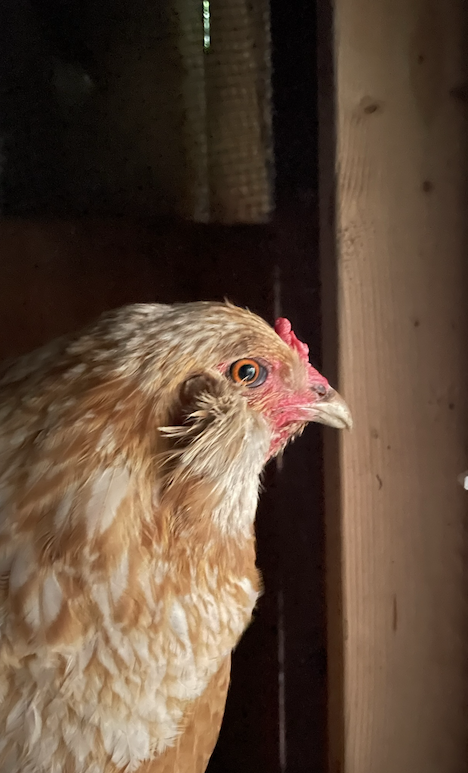Are you thinking about starting your first flock of chickens, but find yourself overwhelmed by the copious amounts of chicken information out there? This is a guide to a great chicken flock for beginners! Keep reading to gain insights on each chicken breed and why they’d make excellent flock mates.
Starter Flock – My Recommendation:
- 2 Buff Orpingtons
- 2 Barred Rocks
- 2 White Leg Horns
- 2 Ameraucanas
- 2 Olive Eggers
- 2 Marans (any type-I have Mystic and French Cuckoo Marans)
When choosing your first flock of chickens, I think it’s important to think about chicken temperament, egg laying ability, climate, and egg color (if you care about a pretty egg carton). The daily number of eggs you will get from 12 chickens depends on chicken breed, age, season, and other factors like diet and living conditions. Most people that raise chickens will become great at chicken math! Chicken math is the addition of new chickens (or other bird species) to your flock that you hadn’t originally planned. Why am I telling you about chicken math? You will more than likely end up having more chickens than you originally planned, more eggs, and therefore you should plan accordingly with your first flock!
Feathered Friends: Why I Chose These Chicken Breeds For a First Flock
Let’s delve into each breed a little deeper.
Buff Orpington

Buff Orpingtons are known as Golden Retrievers in the chicken world. They’re very docile, friendly and have a calm nature which makes them great for families with children and other pets. Their feathers are a warm golden buff color, which gives them a distinctive and attractive appearance. They are moderate layers, laying around 200-280 large brown eggs p/year. Buffs are very hardy and can tolerate colder climates. They are known to be broody, but with a little maintenance.
Barred Rock

Barred Rocks, aka Plymouth Rocks, are also known for their friendly and calm nature. They are a great breed for new chicken owners! My Barred Rock, Barty, is always one of the first hens to greet me when I have treats. Barred Rocks lay around 200-280 brown eggs per year. They lay consistently throughout the year, making them a reliable choice for egg production. Barred Rocks are known for their resilience and ability to tolerate both cold and hot weather conditions.
White Leghorns

White Leghorns are prolific layers and can lay between 280-320 large white eggs per year. I love having white eggs amidst all the browns, blues and greens. They aren’t known to be the most friendly breed; however, with proper socialization, they can adapt to human interaction. They are quite active and skittish. Our White Leghorn, Ghost, has become quite friendly with us and will let me pat and hold her on occasion. They have a high tolerance for heat, which makes them suitable for warmer climates. Their light plumage helps them stay cool. They may require some protection or extra care during cold winters due to their relatively light feathering.
Ameraucana

We named our Ameraucana, Cloud because her muff was puffy like a cloud.
Ameraucanas are generally friendly and docile chickens. They are known to be curious, calm, and relatively easy to handle. Ameraucanas have a distinctive appearance, with their muffs and beards (feathering around the sides of their face). They can be quite active and enjoy foraging outdoors. Ameraucanas are known for their ability to lay colored eggs, which is one of their most desirable traits. They produce eggs that come in shades of blue, green, or occasionally light pink. Pearl and Cloud’s eggs have lightened as they age.
Olive Egger

Olive Egger chickens are a hybrid breed specifically bred to lay eggs with unique olive-colored shells that can range from light green to dark olive (see picture). The unique color of their eggs is a result of crossbreeding between chickens that lay blue eggs (typically from the Araucana or Ameraucana breeds) and chickens that lay dark brown eggs (usually from the Maran breeds). No two Olive Eggers may look exactly alike. The temperament of Olive Eggers can vary, as it depends on the breeds that were crossed to create them. Their egg-laying capabilities can vary, but you can expect them to lay around 3-4 eggs per week.
Marans

Marans are popular for their rich, deep brown egg color and can vary from a chocolate brown to a reddish-brown shade. The intensity of the egg color can be influenced by factors such as genetics, diet, and individual variation within the breed. Marans are often described as docile, easygoing, and good-natured, making them a suitable choice for backyard flocks and families. They are moderate egg layers, typically laying around 150-200 eggs per year, depending on various factors such as genetics, nutrition, and environmental conditions. There are several types of Marans, but the most popular seems to be the French Copper Maran Chicken. I have a Mystic Maran in my flock which is a cross between a male Black Copper Maran and a female Barred Rock chicken. She is calm, docile, and nice to other flock mates. I also just added 2 French Cuckoo Marans to my flock in April.
Feathers to Farewell: Reflections on a First Chicken Flock

From the initial excitement of bringing home your first chicks to the rewarding moments of gathering your own fresh eggs, starting your first flock is an experience that will leave a lasting impression and create cherished memories for years to come. However, choosing your first flock of chickens can be overwhelming. I hope that you have found my recommendations to be helpful in creating a memorable first flock of feathery friends.

